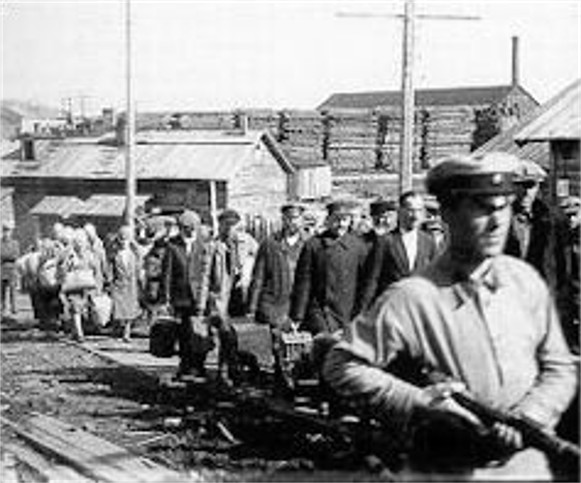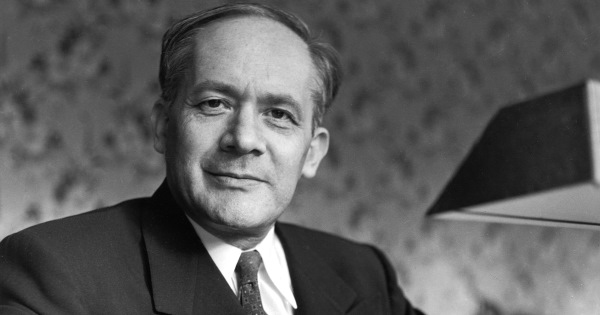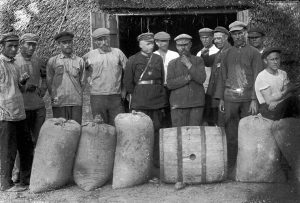
For years on end, scholars, academics and historians have been inflating the number of deaths caused by the Stalin-made famine in 1932-33 (Holodomor). This is mainly due to the fact that reliable information sources were not available. Nevertheless, academic circles continued to propagate inflated numbers in order to preserve the memory of this Ukrainian tragedy.
Questions related to famine mortality during the Holodomor were and continue to be relevant for Ukraine. Long before the proclamation of independence in August 1991, the Ukrainian Diaspora established a “textbook” estimate of 7-10 million victims.
As the Soviet regime was silent about anything concerning the Holodomor and due to the lack of reliable verified sources, this figure was generally accepted. However, such conclusions were made without taking into account the opinions of Ukrainian Diaspora scholars who specialized in demography, notably Volodymyr Kubiyovych and Vsevolod Holubnychy.
The same figure was put forth 40 years ago by Sorbonne professor Alain Besançon. Speaking at a rally in Paris on June 4, 1983 marking the 50th anniversary of the Holodomor, he noted that in 1933, the Soviet authorities had “starved four million men, women, and children”, adding that “the demographic deficit in Ukraine in the 1930s was about seven million. Thus, in absolute numbers, this is a massacre that is arithmetically equal to the extermination of Jews by Hitler”.
Besançon went on to say that “the artificial famine, the 50th anniversary of which we are commemorating today, remains almost unknown”. Thus, the figure of “at least 7 million” was used in the context of the Holodomor largely to disseminate knowledge about the Holodomor and to preserve its memory.
Professional versus emotional assessments
In the last years of the Soviet Union, the figure of 7-10 million deaths was picked up by some Ukrainian politicians and public figures. From the late 1980s to the early 1990s, previously closed archives became accessible and previously unknown sources became available, thus giving researchers and scholars the opportunity to form a balanced and sound estimate. According to calculations by Ukrainian and foreign researchers, the famine mortality rate ranged from 2.6 to 4 million deaths.
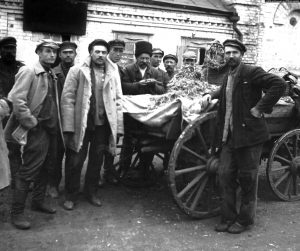
Some time after 2008, a team of leading demographers from Ukraine and the United States (Oleh Volovyna, Nataliya Levchuk, Omelyan Rudnytsky, etc.) conducted a thorough study of available sources, including files from Russian archives, during which the factor of population migration – voluntary and forced (exile, deportation) – was taken into account. Deaths from starvation caused by the artificial famine of 1932–1934 were estimated at almost 4 million (3.94 million), together with lower birth rates (0.6 million) – 4.5 million.
For some time, two types of assessments coexisted in Ukrainian society – professional (scientific) and, so-called emotional, but they did not cause insurmountable misunderstandings. Some time later, despite the fact that Ukraine and a number of other countries had recognized the Holodomor as genocide.
Particularly, after the Holodomor had became more widely known in the world, and even despite underlining the fact that the nature of the crime cannot be determined by the number of deaths, many people in Ukraine began acting aggressively towards those who put forth a smaller number, and imposing the idea that a true patriot, when speaking about the Holodomor, should voice the figure of 7 million deaths, and not less.
Due to this imposed figure, the number of deaths during the Holodomor became directly linked to the definition of genocide: if you do not support this mortality rate, you do not recognize the Holodomor as genocide.
I do not intend to analyze what currently motivates scholars, researchers and historians. Indeed, issues related to Holodomor research and the memorialization of Babyn Yar have long been at the forefront of Russia’s information war against Ukraine and therefore, there may be many reasons. But, I know for a fact that in discussions about the Holodomor mortality rate, we often hear arguments like: “Didn’t the Jews also overestimate the number of victims during the Holocaust? So, why can they, but not us?”
First, in my opinion… I believe that only a reasonable number, whatever it may be, can be named and disseminated. If such numbers as 7 or 10 million are justified, then I will talk about them. At present, the arguments in favour of such inflated figures testify to elementary ignorance or falsification of Ukrainian history in the 1930s. Moreover, according to all indicators, these figures look grossly exaggerated with respect to other great tragedies that Ukrainians suffered throughout history.
At this point, I’d like to discuss the motives for inflating the number of Holodomor victims. They are basically wrong.
If we take a closer look, exaggerating the number of deaths makes no practical sense for Ukrainians who are ready to use a supposedly ideologically convenient fake for the benefit of Ukraine. Our opponents and enemies (the ideologues of Russia’s occupation forces and their allies) have a powerful information machine and are capable of instantly debunking the fakes created by Ukrainians.
After studying the nature and consequences of the Holodomor, I was convinced that it was harmful to overestimate the number of victims, especially for Ukraine and Ukrainians. At first, it became clear that by inflating the numbers, we de facto diminish the importance of Ukrainian resistance to Moscow’s policies, or even completely ignore it. Ukrainians did not just lie down and die. They fought, resisted and survived… and eventually – at the cost of enormous sacrifices – even defeated the Kremlin, forcing it to abandon several communist ideals and return to some economic incentives and partial economic management in the cities and the countryside.
The Perpetrators
There is another reason for not inflating famine mortality in Ukraine. It can be formulated as follows: The greater the famine mortality rate, the greater the number of Ukrainians who committed crimes and perpetrated the Holodomor.
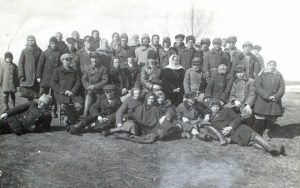
The term “perpetrators” was clearly defined by Holodomor researcher Daria Mattingly. In short, the perpetrators of the Holodomor are men and women who directly facilitated mass famine in Ukraine, people whose actions – the seizure of food and grains – led directly or indirectly to the death of millions of Ukrainians. Moreover, such individuals perpetrated the Holodomor, regardless of whether they acted (for ideological or personal reasons) voluntarily or under duress. It is clear that the use of this term in no way denies the fact that the Kremlin organized the genocide.
It is clear that the Kremlin pursued its policy of repression through local officials. Since at that time the Ukrainian SSR was by definition “Ukrainian”, these ringleaders were also Ukrainians (citizens of the Ukrainian SSR). In addition, in the early 1930s, the Soviet authorities continued to actively pursue the policy of Ukrainization, one of the main features of which was the involvement of ethnic Ukrainians in the power structure.
There is no doubt that many Ukrainians took part in implementing the Kremlin’s policy and, in particular, in creating the Great Famine by confiscating all available food. However, we should not forget another important fact – some local authorities stood up and opposed Moscow’s orders. This fact has been revealed in eyewitness testimonies, memoirs, and criminal cases instigated against such “saboteurs”. It is clear that only some members of local councils, who managed to save their people from starvation (from the foreman of the collective farm to the head of the district committee or district executive committee), were arrested by the communist authorities.
And, that’s not all. Very often survival depended on ordinary citizens, who, for various reasons and motives, could have chosen to become perpetrators or rescuers.
In 2008, I was commissioned to edit the reprint in Ukraine of eyewitness accounts of the Holodomor collected in the United States by the James Mace Commission in the 1980s. It is namely from these memoirs, from persons who were not adults at the time of the Holodomor and who were able to emigrate to the West that I can give examples of ordinary perpetrators (individuals who contributed to this crime) and ordinary rescuers (individuals who resisted the Kremlin’s criminal actions).

Voices of Survivors
Vasyl Hai (born in 1918, Zinkivsky Raion, Poltava Oblast) speaks about the assistance he received from his son-in-law:
Hai: “…he helped us a lot, because no one died of starvation in our village, Troyanivka.
Q: Why?
Hai: Because the villagers were responsible, active people. They didn’t betray or inform on each other. You understand?”
Such statements prove that if there was no one to indicate where the food was hidden the chance of survival increased significantly.
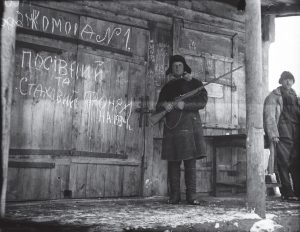
Hryhoriy Samiylenko (born in 1915, village of Tulyholove, Krolevetsky Raion, Sumy Oblast):
“… a child comes to school, and the teacher asks: “Have any of you eaten bread today? Raise your hand.”
So, what do you expect from a child? He raises his hand. Then, they arrest the parents: “Why are you lying? You have bread, but you say you don’t.” You see, if there was something, they always found it.”
This teacher, like anyone who betrayed a neighbour or was simply part of the “clean-up brigade” that confiscated the peasants’ food supplies, was a perpetrator of the Great Famine. There were many of them, and this is recorded in the memoirs of survivors… although even if they were part of such a brigade, it was quite possible to act differently.
It is also obvious that there were not enough punitive organs or other external forces of coercion to cover the entire country. Wherever the locals did not betray each other, wherever they helped each other, many more Ukrainians were able to survive.
Unfortunately, and this has been confirmed by demographers who stand by the figure of 3.94 million victims, there were indeed many local perpetrators. But, there were also many individuals who acted differently and saved their fellow countrymen from starvation!
Of course, there can be no doubt that people who insist on such huge figures as 7 million or more are sympathetic to Ukraine and Ukrainians. But, in fact, they unwittingly include many Ukrainians, who survived on their own or helped others to survive, as perpetrators of the Holodomor! And finally, what is there to say about such figures as 10.5 or even 13 million, which were announced in September at a conference organized by the National Museum of the Holodomor-Genocide?
In conclusion, I would like to once again underline that the history of Ukraine is rich, varied and emotional. Therefore, it is not necessary to invent something new, especially in a way that negatively characterizes Ukrainians.
Such inventions, remarks, suppositions do not enrich our past.

According to Stalin, ethnic Ukrainians were the most problematic. They were the largest ethnic group on agriculturally productive land, had a well-defined identity, were relatively organized and had initially put up a strong resistance to Soviet agricultural policy.
Within just two years, the population of Ukraine, the second largest ethnic group in the Soviet Union, was decimated. Roughly 4 million Ukrainians died in the Holodomor, crushing not only their massive resistance to collectivization, but their movement towards wider autonomy.
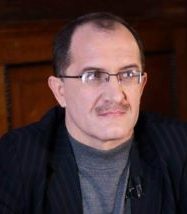
A version of this article appeared in Ukrainian on dsnews.ua.
Related:
- So how many Ukrainians died in the Holodomor?
- Holodomor: Stalin’s punishment for 5,000 peasant revolts
- Half our village died of starvation, mostly the elderly | Voices of Holodomor witnesses
- My neighbor buried her three children | Voices of Holodomor witnesses
- Every day two or three people starved to death in our village | Voices of Holodomor witnesses
- Holodomor in Kharkiv through the lens of Austrian engineer: photo gallery
- An Austrian engineer showed these Holodomor photos to Cardinal Innitzer in 1933, pleading for aid to the starving
- Holodomor survivor stories come to life in mobile app for tourists






